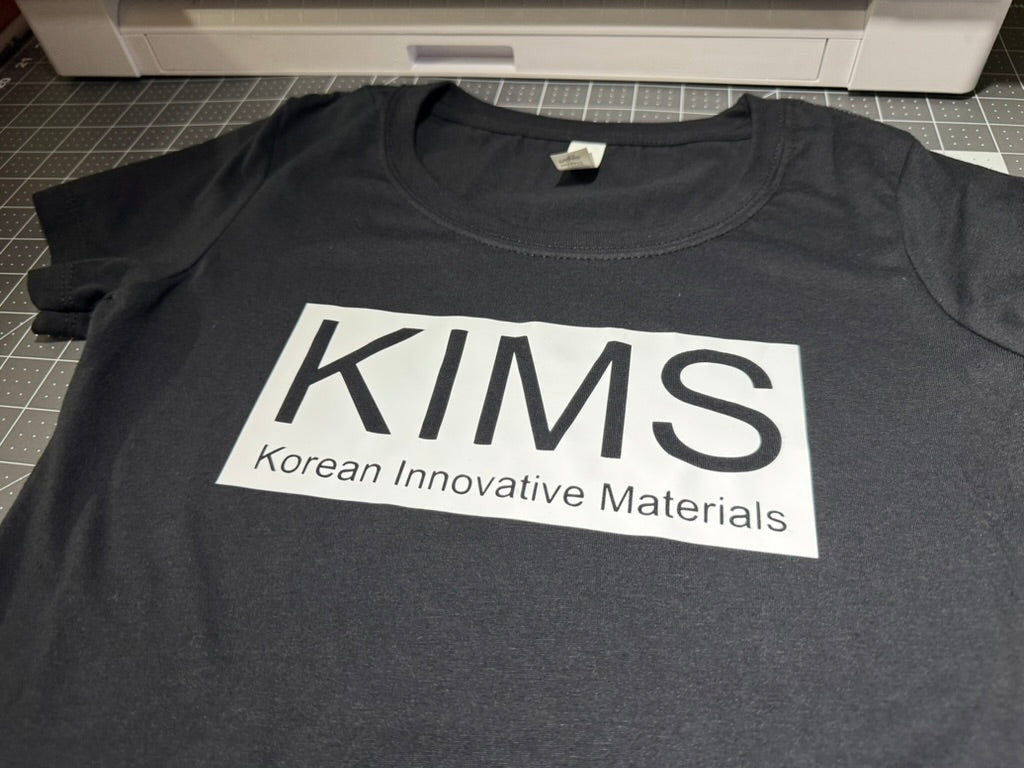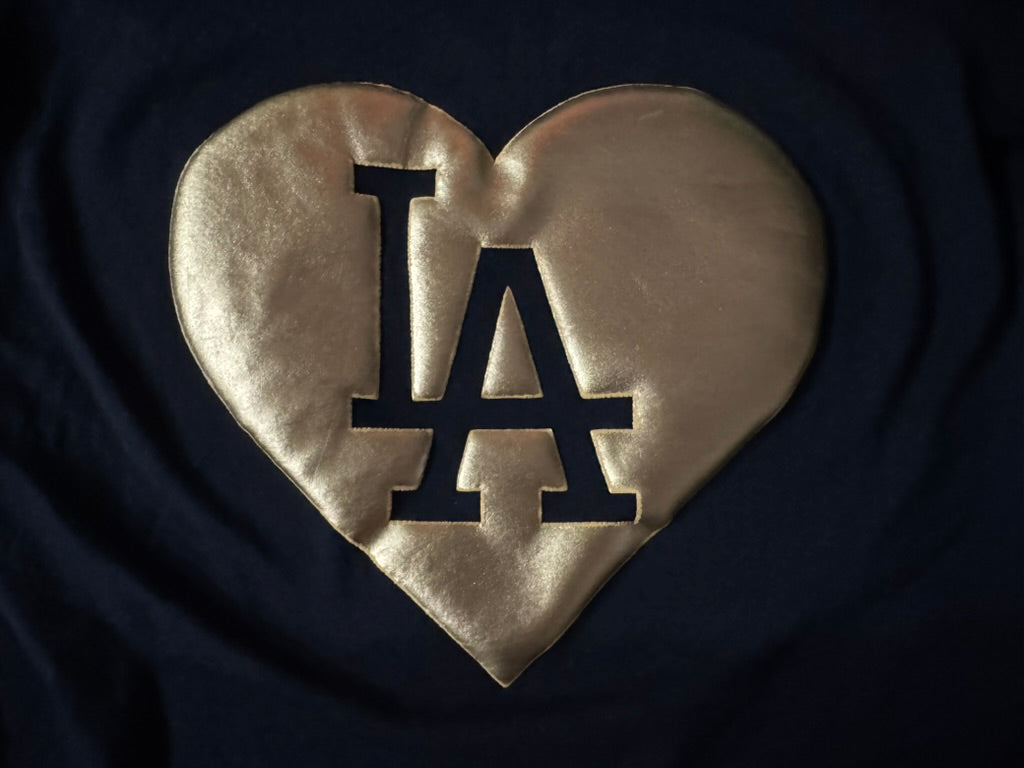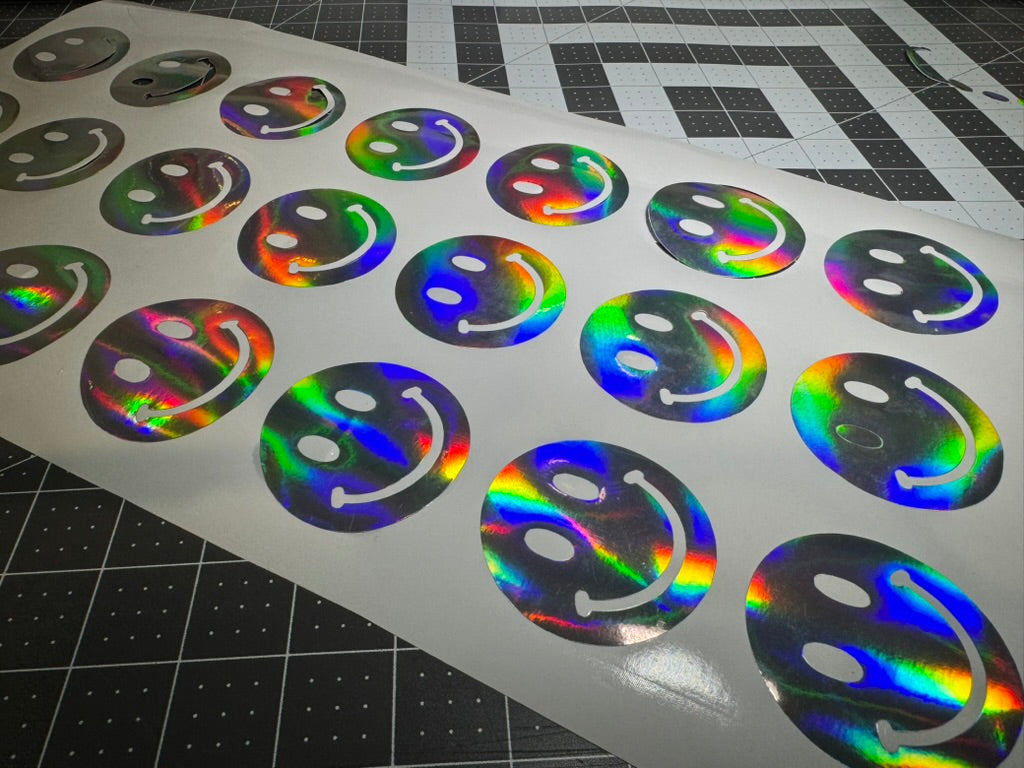Heat transfer vinyl (HTV) is used in a wide range of custom projects, from personal t-shirts to branded uniforms. It allows users to apply designs, logos, and text to fabric using heat and pressure.
There are many types of HTV, each with its own properties and best uses. Understanding the differences between them helps in selecting the right material for specific applications.
This guide explains the types of heat transfer vinyl available, how they work, and what makes each one suitable for different projects.
What Is Heat Transfer Vinyl And Why Does It Matter
Heat transfer vinyl (HTV) is a special material designed to be cut into shapes or letters and then applied to fabric using heat and pressure. When you press this vinyl with heat, it activates an adhesive that bonds the design permanently to your fabric.
The basic process is simple: you cut your design from a sheet of HTV (with the design reversed), remove the excess vinyl (called "weeding"), and then press it onto your fabric using a heat press or iron. The carrier sheet holds everything in place until you peel it away after cooling.
HTV comes in two main materials:
-
Polyurethane (PU): Softer, more flexible, and generally better for clothing
-
Polyvinyl chloride (PVC): Slightly thicker and less flexible, often less expensive
Choosing the right type matters because it affects how your final project looks and lasts. The wrong vinyl might crack, peel, or feel uncomfortable on certain fabrics.
Common terms you'll encounter include:
-
Carrier sheet: The clear backing that holds your design in place
-
Adhesive layer: The heat-activated glue that bonds to fabric
-
Weeding: Removing unwanted vinyl from around your design
Exploring The Main Types Of Heat Transfer Vinyl
1. Standard HTV
Standard heat transfer vinyl is the most common type you'll find. It has a matte finish, thin profile, and feels soft against the skin. This vinyl works well on cotton, polyester, and blended fabrics.
What makes standard HTV great is its versatility. It cuts cleanly, weeds easily, and applies without much fuss. Brands like Siser EasyWeed and Cricut Everyday Iron-On fall into this category.
For everyday t-shirts, bags, and simple designs, standard HTV delivers reliable results that last through multiple washes.
![Standard HTV application on t-shirt]
2. Stretch HTV
Stretch HTV is specially made for athletic wear and stretchy fabrics. It's slightly thinner than standard vinyl and has excellent recovery after being stretched.
This type works perfectly on spandex, Lycra, and performance fabrics. When the garment stretches, the vinyl stretches with it without cracking or peeling.
Athletic teams, workout gear, and form-fitting clothes benefit most from stretch vinyl. It maintains its appearance even after repeated stretching and washing.
3. Glitter HTV
Glitter heat transfer vinyl contains embedded glitter particles that create a sparkling, eye-catching effect. It's thicker than standard vinyl and has a slightly stiffer feel.
This type adds visual interest to fashion items, children's clothing, and decorative projects. The glitter effect remains vibrant even after washing.
Keep in mind that glitter HTV can be more challenging to cut and weed due to its thickness. It works best for larger designs rather than tiny details.
4. Metallic HTV
Metallic HTV provides a reflective, mirror-like finish that resembles foil. It's slightly thicker than standard vinyl but thinner than glitter varieties.
This type creates stunning logos, accents, and special occasion designs. The shiny surface catches light and draws attention to your design.
Metallic vinyl requires precise temperature and pressure settings. It works on most fabrics but may dull slightly after repeated washing.
5. Holographic HTV
Holographic HTV displays a rainbow, color-shifting effect under different lighting conditions. It has a smooth, glossy surface that creates visual interest.
This eye-catching vinyl is perfect for dance costumes, promotional items, and fashion projects. The holographic effect adds dimension and movement to designs.
While moderately thick, holographic vinyl can be tricky to weed due to its slick surface. It adheres well to cotton, polyester, and blends.
6. Flock HTV
Flock heat transfer vinyl has a raised, velvety texture that feels like suede. It's thicker than most other vinyl types and creates a distinctive tactile experience.
This vinyl creates a vintage look for sports jerseys, team numbers, and textured designs. It provides an alternative to embroidery with its raised appearance.
Flock requires specific cutting settings due to its thickness, making weeding moderately difficult. Once applied, it withstands washing very well.
7. Glow In The Dark HTV
Glow-in-the-dark HTV absorbs light and then emits a soft glow in darkness. It typically comes in light green or white and has a smooth feel.
This fun vinyl is perfect for Halloween costumes, children's items, and safety wear. The glow effect recharges when exposed to light.
Cutting and weeding are relatively straightforward, though the vinyl is slightly thicker than standard types. It works best on cotton and polyester fabrics.
8. 3D Puff HTV
3D puff heat transfer vinyl expands when heated, creating a raised, dimensional effect. After pressing, it has a soft, foam-like feel.
This specialty vinyl makes team numbers, logos, and statement pieces stand out. The dimensional effect adds visual interest and texture.
Working with puff vinyl requires specific temperature, pressure, and time settings. It's moderately difficult to cut and weed but creates unique results.
9. Reflective HTV
Reflective HTV contains tiny glass beads that reflect light back to its source. It has a smooth surface with a slightly firm texture.
This safety-oriented vinyl is essential for outdoor wear, athletic gear, and visibility clothing. When light hits it (like from car headlights), it reflects brightly.
Reflective vinyl cuts with moderate difficulty and works best on polyester, nylon, and performance fabrics. Its reflective properties remain effective through multiple washes.
Quick Reference Table:
|
Type |
Thickness |
Stretch |
Weeding Difficulty |
Best Uses |
Wash Durability |
|---|---|---|---|---|---|
|
Standard |
Thin |
Moderate |
Easy |
Everyday wear, t-shirts |
High |
|
Stretch |
Thin |
High |
Easy-Moderate |
Athletic wear, activewear |
High |
|
Glitter |
Thick |
Low |
Moderate |
Fashion, kids' items |
Moderate-High |
|
Metallic |
Medium |
Low |
Moderate |
Logos, special events |
Moderate |
|
Holographic |
Medium |
Low |
Moderate |
Costumes, fashion |
Moderate |
|
Flock |
Thick |
Low |
Moderate-Difficult |
Jerseys, textured looks |
High |
|
Glow In Dark |
Medium |
Low |
Easy-Moderate |
Safety, costumes |
Moderate |
|
3D Puff |
Medium |
Low |
Moderate-Difficult |
Team numbers, logos |
Moderate |
|
Reflective |
Medium |
Low |
Moderate |
Safety, outdoor gear |
High |
Key Differences Between Finishes And Best Uses
The finish of your heat transfer vinyl dramatically affects how your project looks and performs. Matte finishes (like standard HTV) appear flat and professional, while glossy and specialty finishes (metallic, holographic) create bold, eye-catching effects.
Thickness plays a major role in how the vinyl feels on fabric. Thicker vinyl types like glitter, flock, and 3D puff add weight and texture but may feel stiff on lightweight fabrics. Thinner vinyl like standard and stretch types feel more natural and move better with the garment.
Different finishes also affect washing durability. Standard and stretch vinyl generally offer the best wash resistance, while specialty finishes might require gentler care to maintain their appearance over time.
When choosing a finish, consider your project purpose:
-
Professional use: Matte and stretch finishes work best for uniforms and business wear
-
Decorative projects: Glitter, metallic, and holographic create standout designs
-
Athletic wear: Stretch and reflective vinyl offer functionality and durability
-
Children's items: Glow-in-the-dark and glitter add fun visual elements
How To Choose The Right HTV For Your Project
Selecting the perfect heat transfer vinyl depends on four key factors:
1. Fabric type matters most. Cotton and poly-cotton blends work with almost any HTV. Stretchy fabrics need stretch vinyl. Nylon and waterproof fabrics require special low-temperature vinyl. Always check the fabric content before choosing your vinyl.
2. Consider how the item will be used. Everyday clothing needs durable, washable vinyl like standard or stretch types. Special occasion items can use decorative vinyl like glitter or metallic. Athletic wear benefits from stretch or reflective vinyl.
3. Look at your design complexity. Intricate designs with small details work best with thin, easy-to-weed vinyl like standard HTV. Bold, simple designs can use thicker, textured vinyl like flock or puff. The more detailed your design, the thinner your vinyl should be.
4. Match your equipment capabilities. Heat presses provide the most consistent results for all vinyl types. Home irons work adequately for standard and stretch vinyl but may struggle with specialty types that need precise temperature control.
Before starting a large project, always test a small piece of your chosen vinyl on the actual fabric. This confirms the adhesion, appearance, and feel before committing to the full design.
Cost varies significantly between vinyl types. Standard vinyl typically costs less than specialty types like glitter, reflective, or puff. For large projects or business use, this price difference becomes important when calculating project costs.
Common Mistakes And How To Avoid Them
1. Incorrect Press Settings
Using the wrong temperature, pressure, or time leads to poor adhesion or damaged vinyl. Different vinyl types need specific settings.
-
Temperature issues: Too hot burns the vinyl; too cool prevents proper bonding
-
Pressure problems: Too light causes poor adhesion; too heavy can flatten textured vinyl
-
Time factors: Too short prevents complete bonding; too long can damage the vinyl
Always check the manufacturer's recommended settings for each specific vinyl type. Keep a reference chart near your workspace for quick access.
2. Skipping Test Cuts
Diving straight into cutting without testing wastes material and time. Different vinyl types need different cutting settings.
Test cuts help you:
-
Determine the correct blade depth
-
Set appropriate cutting pressure
-
Adjust cutting speed for clean results
A small test cut takes seconds but saves hours of frustration and wasted materials. Make it a habit before every new design or vinyl type.
3. Poor Storage Conditions
Heat transfer vinyl degrades when stored improperly. Heat, humidity, and sunlight are the main culprits.
Store your vinyl:
-
In a cool, dry place
-
Away from direct sunlight
-
Flat to prevent curling
-
In original packaging when possible
If vinyl becomes curled, lay it under a heavy book for a day or apply gentle heat with a press to flatten it before cutting.
Where To Go Next For HTV Supplies And Inspiration
KIMS Direct offers premium heat transfer vinyl products that deliver professional results. Their materials are formulated for precise cutting and easy weeding, making them ideal for both beginners and experienced crafters.
Their vinyl collection includes standard options plus specialty finishes like 3D Puff, reflective, and holographic vinyl. Each product undergoes testing to ensure it maintains adhesion through multiple wash cycles.
For those looking to explore different vinyl types, KIMS Direct provides materials that work with popular cutting machines like Cricut and Silhouette. Their heat transfer vinyl for Cricut projects cuts cleanly and transfers reliably.
To browse their full selection of heat transfer vinyl options, visit https://kimsdirect.com/collections/all.
Beyond supplies, inspiration can be found through online crafting communities, video tutorials, and project galleries. These resources demonstrate how different vinyl types can be used to create unique, professional designs.
Frequently Asked Questions About Heat Transfer Vinyl
What is the difference between heat transfer vinyl and adhesive vinyl?
Heat transfer vinyl uses heat to bond to fabrics, while adhesive vinyl has a sticky backing for application to hard surfaces like glass, plastic, or wood.
How long does heat transfer vinyl last on clothing?
Properly applied heat transfer vinyl can last through 50+ wash cycles when cared for according to instructions, with durability varying by vinyl type and washing methods.
Can different types of heat transfer vinyl be layered together?
Some heat transfer vinyl types can be layered, particularly standard varieties, but specialty finishes like glitter or flock should only be layered if specifically indicated by the manufacturer.
What equipment do I need to work with heat transfer vinyl?
Basic equipment includes a cutting machine (like Cricut or Silhouette), weeding tools, and a heat source (either a heat press or household iron).
Which heat transfer vinyl works best for polyester and performance fabrics?
Stretch heat transfer vinyl and specially formulated low-temperature vinyl work best for polyester and performance fabrics because they adhere at lower temperatures and maintain flexibility.







